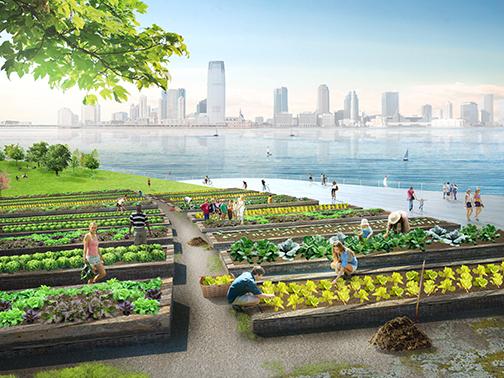Global warming has caused a noticeable change in the actions and standards of our society. The destructive lifestyle of excessive producing, consuming and wasting is no longer an option. In the U.S., changes have been taking place in a variety of forms, such as when grocery stores ask customers to bring their own reusable bags or certain businesses install electric and hybrid car charging stations in their parking lots. With this movement toward eco-friendliness, most of the emphasis has been placed on what we can do to improve in the future, but we haven’t been focusing enough on the damage we have already caused.[quote] Just because the damage has already been done does not mean we can push it out of sight.[/quote]
We are doing so-so in San Diego. There are incentives for businesses to reduce waste through participation in the Miramar Greenery food-waste recycling program. But this program only applies to businesses that are getting rid of food, and poses obstacles for the time or transportation of waste.
Local schools have taken their own initiatives. San Diego State is proud to have the only Leadership in Energy and Environmental Design Platinum-certified student union in the California State University system, the highest LEED rating offered. To earn this rating, SDSU went to great lengths to be eco-friendly. Eighty percent of the Conrad Prebys Aztec Student Union was constructed using recycled materials from the original student union. It also houses a green rooftop, on-site solar panels, operable windows, an underground storage tank and much more.
The University of San Diego is striving to become a zero-waste campus. It currently houses a BioHiTech Food Digester, which breaks down food waste using microorganisms and converts it to water. According to the Office of Sustainability at USD, the university is able to convert 3,200 pounds of food waste each week. These are great contributions to the green movement, but are in no way contributing to the issue of waste we have already produced.
Efforts to reduce, reuse and recycle are great, but a major problem is being overlooked. There is a massive pile-up of waste that has already been produced and it isn’t going anywhere. [quote]As the eighth largest city in the U.S., San Diego produces 910,000 tons of trash per year, all of which goes to one place.[/quote] The Miramar Landfill is San Diego’s only actively operating landfill and as a result takes on the massive challenge of our overbearing waste production. The landfill was expected to reach its maximum capacity in 1995, but thanks to waste reduction, recycling programs and innovative engineering, the expected life of the plant has been extended to 2022—still not long off.
What are we to do? San Diego needs to start emphasizing the management of our waste and where it will go once the life of the Miramar Landfill has run out. Fortunately, in an innovative sense, we’re not the only city dealing with this issue, and some forward thinkers have been brainstorming. Comprised of two brilliant minds, PRESENT Architecture in New York City has designed an extremely versatile system to deal with that city’s even larger trash dilemma. The project is called Green Loop: The concept is a large waste-composting hub that sits on New York’s waterfront. The numerous uses designed to simultaneously take place on the platform are where the ideas get creative.
New York City struggles with increasingly limited space but has the unique advantage of access to a vast waterfront. The architects behind Green Loop took the needs of the city and developed a system that utilizes its resources to serve those needs. A Green Loop hub is designed to manage and compost waste on one level of the facility, while the rest of the space on the hub will be used to build parks, educational facilities, parking structures, community gardens, bike paths and even cross country skiing in the winter. The waterfront location of the Green Loop hub also provides access to barges, which can transport compost out of the hub easily and without traffic congestion.
PRESENT has proposed 10 waterfront hubs throughout New York City in order to decrease traffic and travel distance of waste. It also designed the system of hubs to manage waste from different areas of the city, to assure that boroughs will not be overburdened with too much waste. Green Loop is still just a concept and is a way off from being implemented, but the idea undoubtedly tackles the issue of waste management dynamically.
When asked about the cost of Green Loop, one of the lead architects, Evan Erlebacher, said, “It won’t be cheap, but if you consider that NYC is spending over $300 million every year to truck waste out of the city to landfills, it’s possible that these facilities could start to make financial sense over time.”
[quote]We need to be looking at the big picture in the long run. A hefty investment may be necessary now to secure a healthier environment in the future.[/quote]
San Diego needs to be taking these types of innovative ideas into consideration as ways to deal with waste management in the future. San Diego is not nearly as large as New York City, but it does have similar access to waterfront space. Both of these factors could be beneficial to us; our smaller size might allow us to only need one Green Loop hub while still utilizing our waterfront space.
Even if a Green Loop hub is not the answer, concepts that are mutually beneficial for our community and the environment need to start being researched. San Diego is a great city, but without proper management and action we could have some tremendous issues in the near future; 2022 is only eight years away.
Photo courtesy of Evan Erlebacher.












